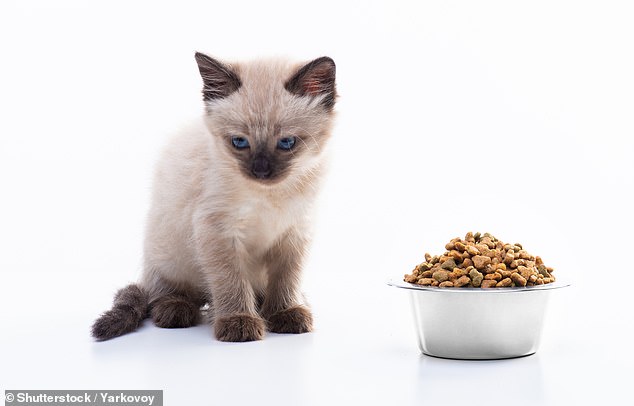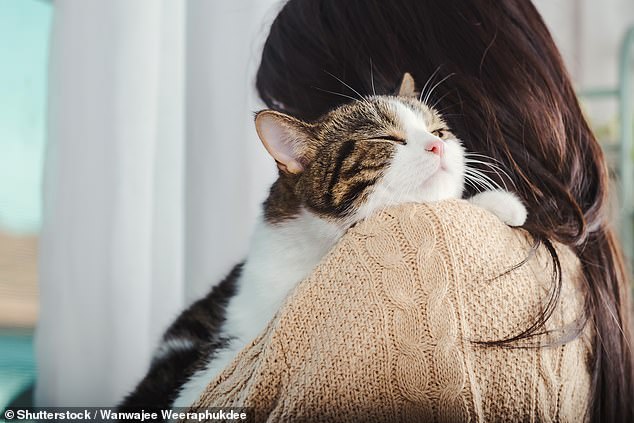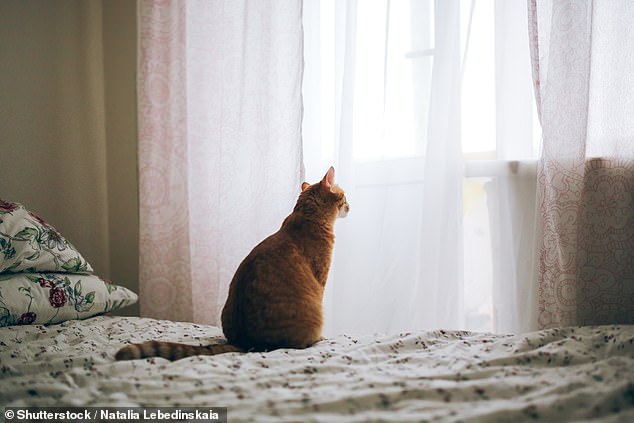Feline sad: Cats show key signs of mourning after one of their friends passes away – including sleeping more, eating less and hiding, study finds
The death of a pet is devastating for any owner, but if you have multiple animals, the loss can be just as hard on them, new research shows.
Researchers from Oakland University have shown that cats show significant signs of grieving after the death of another pet in the same household.
This includes changes in sleep, attention seeking, and spending time alone.
And it’s not just cats that grieve, humans do too.
The findings of the new study come shortly after research showed that dogs exhibit grieving behaviors after the loss of a companion.
The death of a pet is devastating for any owner, but if you have multiple animals, a new study shows the loss is just as hard for them (stock image)

Researchers from Oakland University have revealed that cats show significant signs of grief after the death of another pet in the same household. This includes changes in eating behavior (stock image)
In 2022, researchers from the University of Milan revealed that dogs show important morning signals after losing a companion.
Until now, however, it was unclear whether this also applies to cats.
“While dogs, which are descended from pack animals, are likely to respond more strongly to the death of a companion, cats cared for by humans have adapted to living among their own kind. Their ability to respond to the loss of a companion therefore deserves further investigation,” the researchers wrote in their study, published in Applied Animal Behaviour Science.
In the new study, researchers surveyed 412 cat owners about the immediate and long-term changes they saw in a surviving cat after the death of another pet.
The results showed that some cats showed key indicators of sadness, including changes in sleeping, eating, playing, attention seeking, hide and spend time alone.
However, the team found that this behavior varied depending on the cat’s relationship with the deceased animal.

Some cats showed key indicators of sadness, including changes in sleeping, eating, playing, attention seeking (stock image), hiding, and spending time alone

The team found that grieving behavior varied depending on the cat’s relationship with the deceased animal (stock image)
“The longer the cat had lived with the deceased animal, the more the caregivers indicated that they sought more attention after the death,” the researchers explain in the study.
In addition, the owner’s relationship with the deceased cat also influenced the reaction of his surviving pet.
“This suggests that our feline friends may reflect the grief of their caregivers,” the researchers said.
The team hopes the findings will help to break the stereotype that cats are aloof and antisocial.
Brittany Greene, lead author of the study, said: ‘Our research shows that domestic cats show behavioural changes similar to those of their pet dogs.
“The psychological experience of loss is universal in the animal kingdom, and the bonds we forge with our pets reflect the care and connection we provide.”
